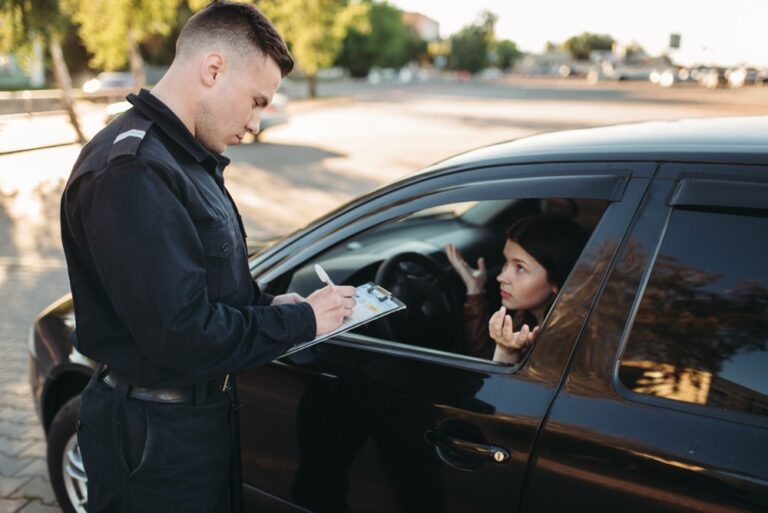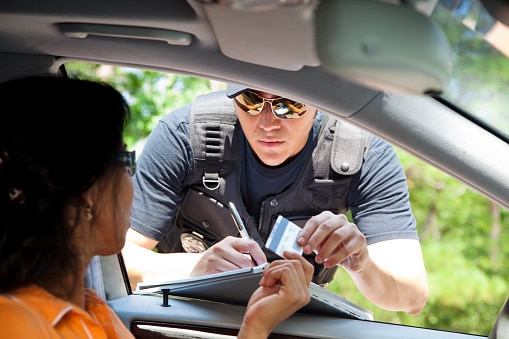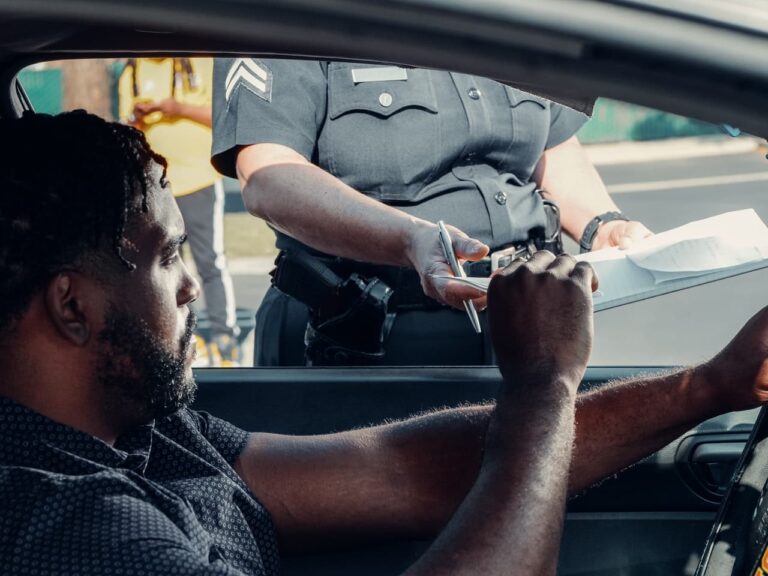 The open road is calling you. The wind in your face, the smell of gasoline burning and the comforting chug chug of the engine beneath you is all bliss as you drive along the highway. And then the unmistakable sound of a siren from behind you.
The open road is calling you. The wind in your face, the smell of gasoline burning and the comforting chug chug of the engine beneath you is all bliss as you drive along the highway. And then the unmistakable sound of a siren from behind you.
If you’re a happy hog rider who can’t wait for those long wind-whipped rides, you want to make sure that there’s no reason to interrupt your ride for anything other than pit stops. In honour of all you motorcyclists who hit the road last Friday the 13th and are enjoying the beautiful weather (with more to come) that signals the beginning of riding season, here’s our newest blog post packed full of important information about Ontario’s motorcycle traffic laws.
The Basics of Motorcycle Traffic Laws
Equipment
Helmets
You need to make sure that you are wearing a helmet that properly meets Ontario’s Safety Helmet laws. This means your helmet must:Have a hard, smooth outer shell;
- Be lined with protective padding material, or fitted with other energy absorbing material – there are specific guidelines for this; your helmet must have 2.5cm of stiff polystyrene foam and cloth liner;
- Not be damaged from use, or misuse;
- Be firmly attached to a strap designed to fasten under the chin;
- MUST have a sticker from Canadian Standards Association (CSA), Snell Memorial Foundation (Snell), British Standards Institute (BSI), America Federal Motor Vehicle Safety Standards (DOT), or United Nations Economic Commission for Europe (ECE) which certifies it meets Ontario’s Safety Helmet laws.
And, to state the obvious, any driver or passenger riding a motorcycle has to be wearing a helmet that meets the above criteria, AND that chin strap we mentioned? It must be fasted under the chin while riding a motorcycle. If not, it is considered not wearing a helmet at all
A violation with your helmet is an equipment violation. That means that an officer can visually identify it as unsafe and stop you. If asked, you are required to surrender your helmet for inspection. If you refuse the officer can declare your motorcycle unsafe to drive, because a faulty helmet is faulty equipment.
Lights
A motorcycle must be equipped with two lights. One in the front, that must be a white light, and one in the rear, which must be a red light. As well, if your motorcycle was manufactured on or after January 1st, 1975 then it must have its lights on at all times, both the headlight and tail light, when in gear.
Brakes
A motorcycle must have two brake systems. Each must be able to stop the motorcycle separately. One brake system must apply to the front wheel, and the other to the back wheel.
Handlebars
The handlebars on a motorcycle must be no more than 15 inches (380 mm) high above the seat when the seat is depressed by the weight of the driver. Some officers measure from the top of the handlebar, and others from the grip, this is, unfortunately, an inconsistency across the province.
Mufflers
A muffler, like on any other vehicle must prevent noise and excessive smoke. We have a whole blog dedicated to mufflers that you can read here.
Mirrors
Every motorcycle must have at least one mirror that offers a clear view to the rear of the motorcycle.
Number Plate
The plate on a motorcycle must be visible from 180 degrees from the rear. There is a whole case based on this rule, believe it or not. (R. v. Seguin 2003) So, basically, having your licence plate on the side of your motorcycle where you can’t see it from the rear, may attract unwanted attention from officers.
All of these violations come with a fine and 0 demerit points. Multiple equipment infractions may lead to the officer deeming the vehicle unsafe and additional charges.
Licences
M1 Licence
Motorcyle drivers with an M1 licence must abide by the following rules
- Maintain a zero blood alcohol level
- Ride only during daylight hours – a half hour before sunrise to a half hour after sunset
- Wear a proper, approved helmet
- Cannot drive on roads with speed limits above 80KM/hour
- Ride alone – an M1 driver cannot carry passengers
M2 Licence
Motorcycle drivers with an M2 licence can ride at all hours and on all roads. They must still wear a helmet and maintain a zero blood alcohol level. After 22 months you can take the next road test and get your full M licence. If you take a recognized Motorcycle Safety Test then you can take that test after 18 months. Once you have your M you are a fully licensed motorcycle driver.
Maintenance
As with all vehicles, maintaining your motorcycle properly is extremely important. Not only will your motorcycle last longer, giving you the most out of every riding season, eliminating indicators of poor upkeep will make police less likely to pull you over.
Follow the instructions in the manufacturer’s manual, and keep to a proper maintenance schedule and you can be in the clear.
All of this advice is useless if you don’t follow the rules of the road. If you’re smart and drive safely you will get the best out of this years season! Happy riding!
Every situation is different. Remember you have a right to fight your ticket. At Bulwark Legal Services we provide free consultations. You can go to our website and send us a copy of your ticket. We will help you decide the right course of action to take.


